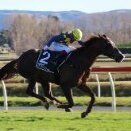-
Available Subscriptions
BOAY Racing News
39,344 topics in this forum
-
- Journalists
Fillies shine at Te Aroha
-
- Journalists
- 0 replies
- 135 views
-
- Journalists
Tiley delighted to be back racing at Pukekohe
-
- Journalists
- 0 replies
- 139 views
-
- Journalists
Pike doubles down on Riccarton features
-
- Journalists
- 0 replies
- 135 views
-
-
- Journalists
- 0 replies
- 155 views
-
-
- Journalists
McCooly’s Lad eyes Shootout surprise
-
- Journalists
- 0 replies
- 154 views
-
- Journalists
Krug scores redemption in Junior FFA
-
- Journalists
- 0 replies
- 161 views
-
- Journalists
And that’s 5 wins for Mark Purdon on Cup day
-
- Journalists
- 0 replies
- 121 views
-
- Journalists
New Zealand Cup day is underway!
-
- Journalists
- 0 replies
- 143 views
-
-
- Journalists
- 0 replies
- 145 views
-
-
- Journalists
Daily Mail: No holding back Limiting at Warragul
-
- Journalists
- 0 replies
- 139 views
-
- Journalists
Traralgon returns to racing
-
- Journalists
- 0 replies
- 188 views
-
-
- Journalists
- 0 replies
- 139 views
-
-
- Journalists
NZ Cup Punters Club now over $70,000
-
- Journalists
- 0 replies
- 6k views
-
-
- Journalists
- 0 replies
- 113 views
-
-
- Journalists
It’s New Zealand Cup day!
-
- Journalists
- 0 replies
- 142 views
-
- Journalists
The Whale’s NZ Cup quaddie
-
- Journalists
- 0 replies
- 156 views
-
- Journalists
Plenty of merit in runner-up finish
-
- Journalists
- 0 replies
- 139 views
-
- Journalists
Aston Rupee headlines Shootout
-
- Journalists
- 0 replies
- 121 views
-
- Journalists
CEO’s Monthly Update: November
-
- Journalists
- 0 replies
- 133 views
-
- Journalists
Latest big bets ahead of NZ Cup meeting
-
- Journalists
- 0 replies
- 130 views
-
- Journalists
House takes late treble at Palmy
-
- Journalists
- 0 replies
- 160 views
-
- Journalists
Levante on-target for fruitful campaign
-
- Journalists
- 0 replies
- 139 views
-
- Journalists
Rose set to bloom in Coupland’s
-
- Journalists
- 0 replies
- 144 views
-
- Journalists
Freebie set to add to stakes record at Riccarton
-
- Journalists
- 0 replies
- 127 views
-
-
- Journalists
- 0 replies
- 125 views
-


